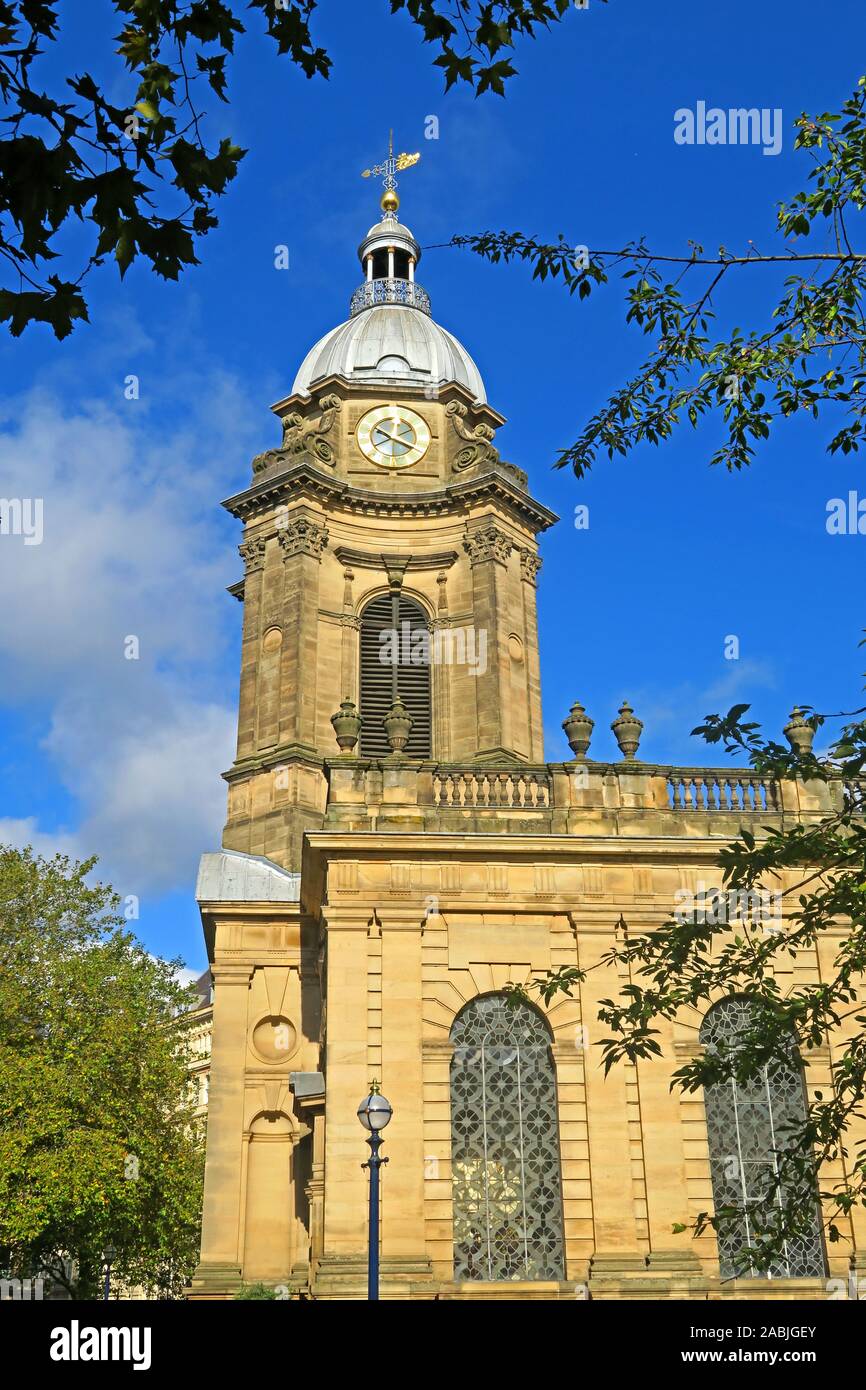Exterior and dome, St Philips cathedral, Colmore Row, Birmingham B3 2QB,Church of England, Anglican

Image details
Contributor:
Tony Smith / Alamy Stock PhotoImage ID:
2ABJGEYFile size:
57.1 MB (2.8 MB Compressed download)Releases:
Model - no | Property - noDo I need a release?Dimensions:
3648 x 5472 px | 30.9 x 46.3 cm | 12.2 x 18.2 inches | 300dpiDate taken:
19 October 2019Location:
St. Philips Place,Birmingham,West Midlands,England,UK, B3 2RBMore information:
St Philip's was designed by Thomas Archer and constructed between 1711 and 1715. The tower was complete by 1725, and the urns on the parapet were added in 1756. Archer had visited Rome and his design, in the Baroque style, is influenced by the churches of Borromini, being rather more Italianate than churches by Christopher Wren. The rectangular hall church interior has aisles separated from the nave by fluted pillars of classical form with Tuscan capitals supporting an arcade surmounted by a heavily projecting cornice. Wooden galleries are stretched between the pillars in a manner typical of English Baroque churches. Externally, the tall windows are interspaced by pilasters in low relief, supporting a balustrade at roof level with an urn rising above each pilaster. The western end is marked by a single tower which rises in stages and is surmounted by a lead-covered dome and a delicate lantern. The building is of brick and is faced with stone quarried on Archer's estate at Umberslade. The chancel, featuring stained glass by Edward Burne-Jones The original shallow eastern apse was extended in 1884–88 by J. A. Chatwin into a much larger chancel, articulated by strongly projecting Corinthian columns. This bold design is made richer by the marbled surfaces of the columns and pilasters, the gilding of capitals and cornice and the ornately coffered ceiling. Chatwin also refaced the exterior of the building because the stone from the original quarry was very soft. The tower was refaced in 1958-59. Edward Burne-Jones, who was born in nearby Bennett's Hill and baptised in the church, added to the enhancement of St Philips by the donation of several windows, of which three are at the eastern end. The west window, also by Burne-Jones, was dedicated in memory of Henry Bowlby in 1897. Six of the monuments have heritage listings, including one commemorating two men who died during the construction of Birmingham Town Hall and a memorial to the victims of the Brum pub bombing